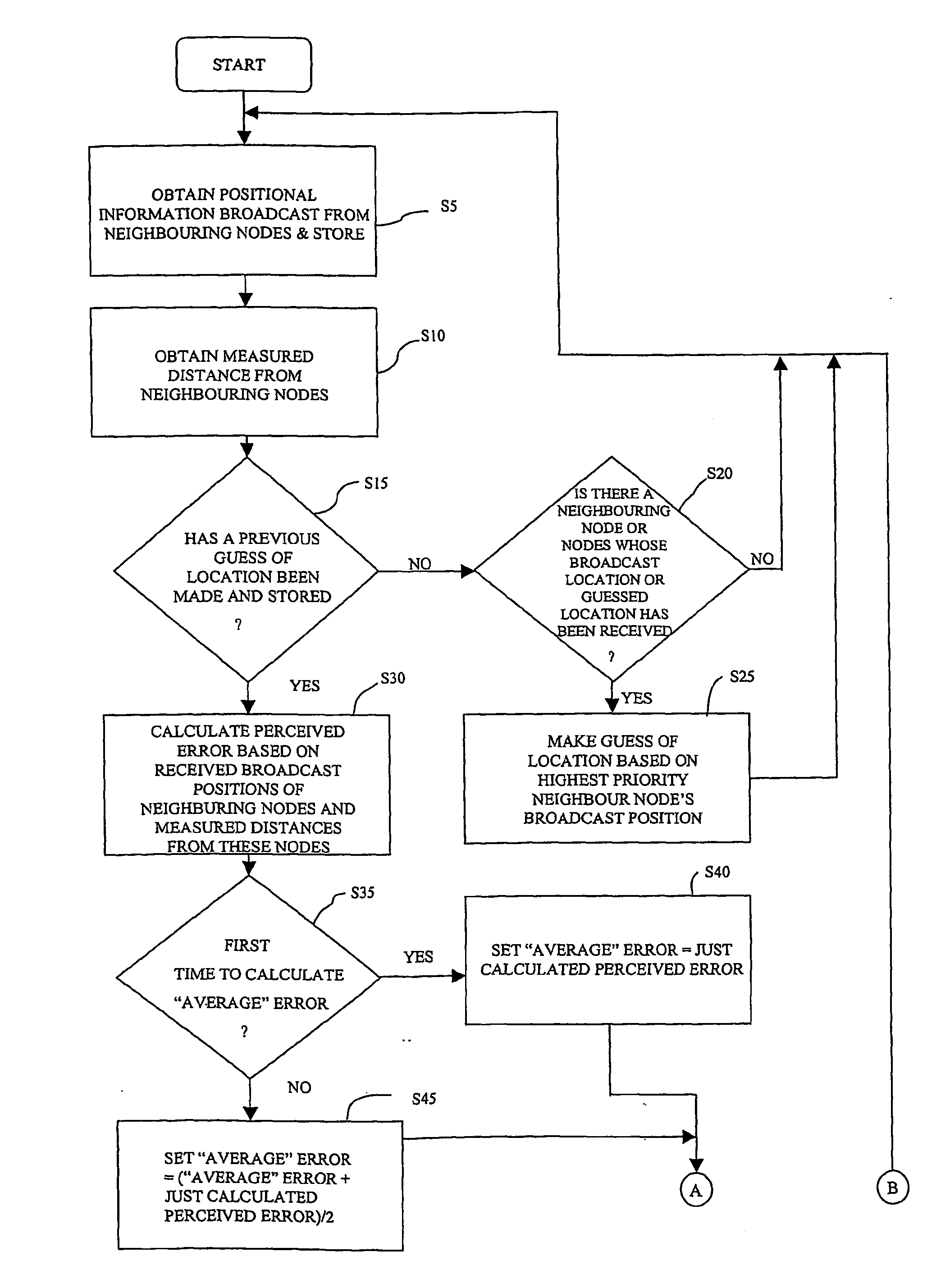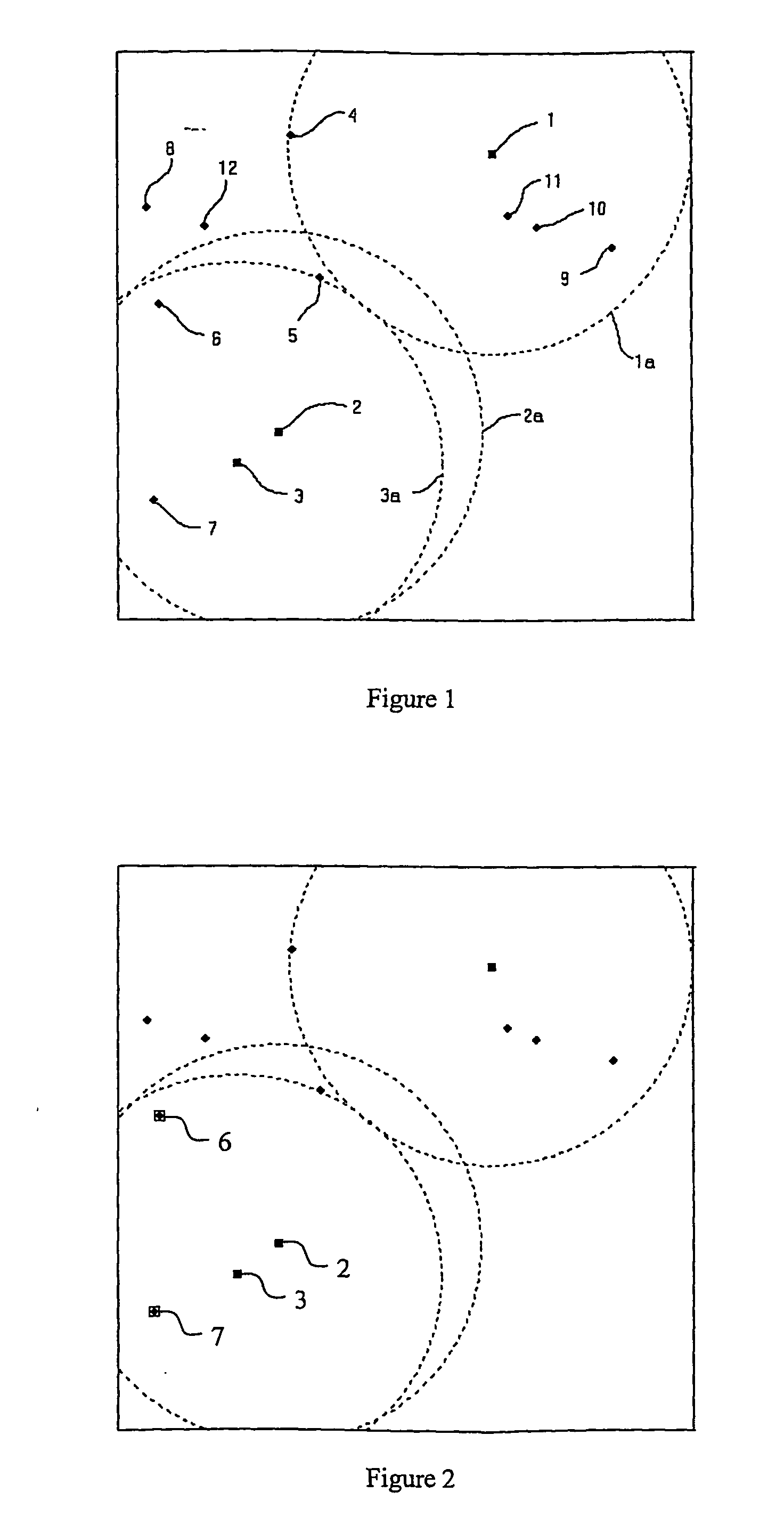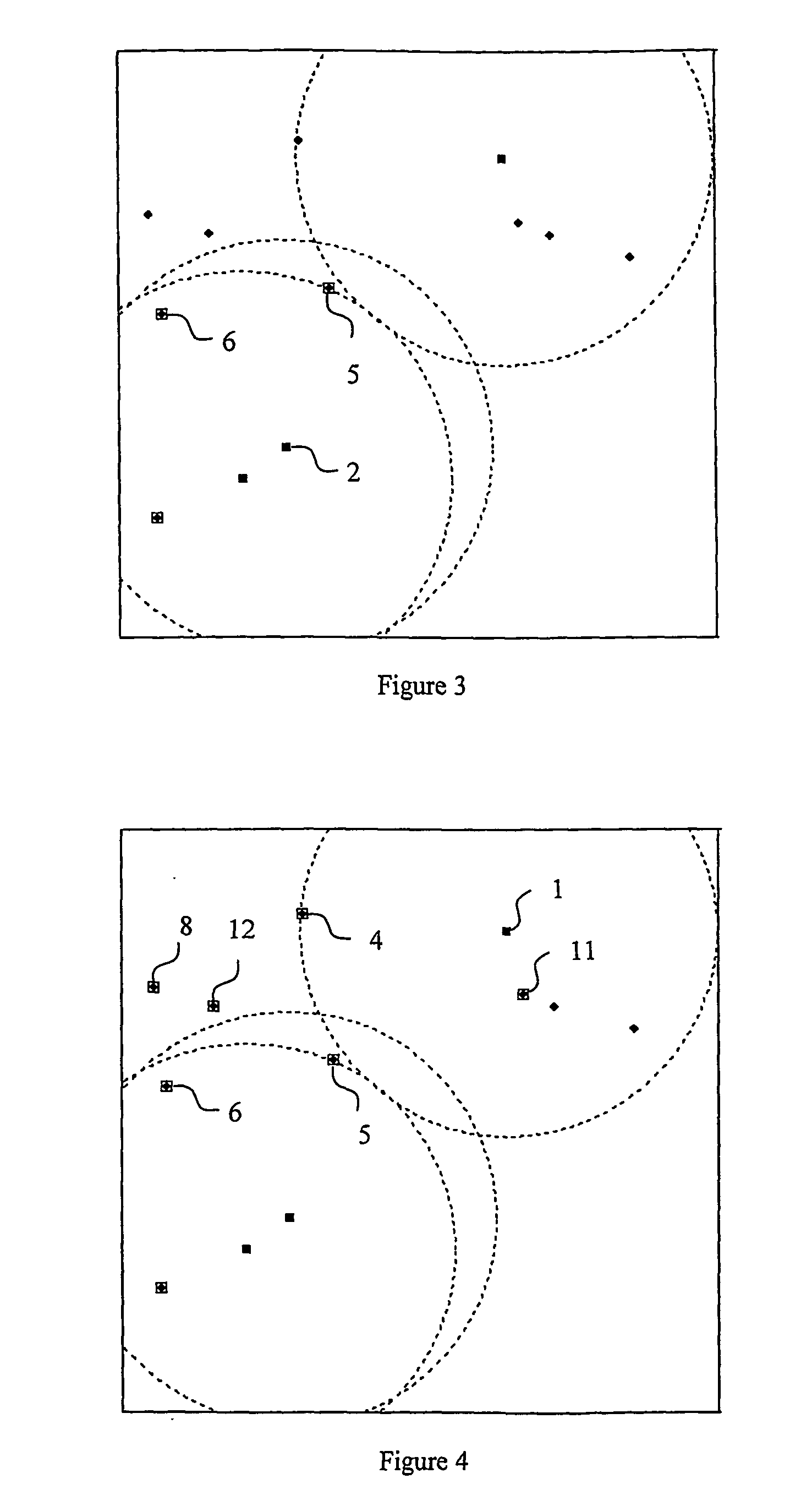Method and apparatus for locating devices
a technology for locating devices and devices, applied in the direction of instruments, wireless communication, transmission, etc., can solve the problem of small overall cost increas
- Summary
- Abstract
- Description
- Claims
- Application Information
AI Technical Summary
Benefits of technology
Problems solved by technology
Method used
Image
Examples
Embodiment Construction
Part 1: FIGS. 1 to 8
[0067] The first embodiment to be described is of a small wireless ad-hoc network comprising twelve position determining devices, only three of which contain GPS's, and which are able to determine the position of most of the devices within six iterations of the position determining algorithm described below. The described embodiment, comprising only twelve devices, could be used for monitoring a small body of water. However, it will be apparent to a person skilled in the art that the described embodiment could easily be scaled up for use in monitoring a very large body of water such as a sea or ocean, by including many more simple devices (no more of which would, in theory, require in-built GPS's).
[0068] In overview, in the present example embodiment, three of the devices include GPS's and these broadcast their location at the first step of each of the required six iterations. At approximately the same time, each of the other devices determines its distance fro...
PUM
 Login to View More
Login to View More Abstract
Description
Claims
Application Information
 Login to View More
Login to View More - R&D
- Intellectual Property
- Life Sciences
- Materials
- Tech Scout
- Unparalleled Data Quality
- Higher Quality Content
- 60% Fewer Hallucinations
Browse by: Latest US Patents, China's latest patents, Technical Efficacy Thesaurus, Application Domain, Technology Topic, Popular Technical Reports.
© 2025 PatSnap. All rights reserved.Legal|Privacy policy|Modern Slavery Act Transparency Statement|Sitemap|About US| Contact US: help@patsnap.com



